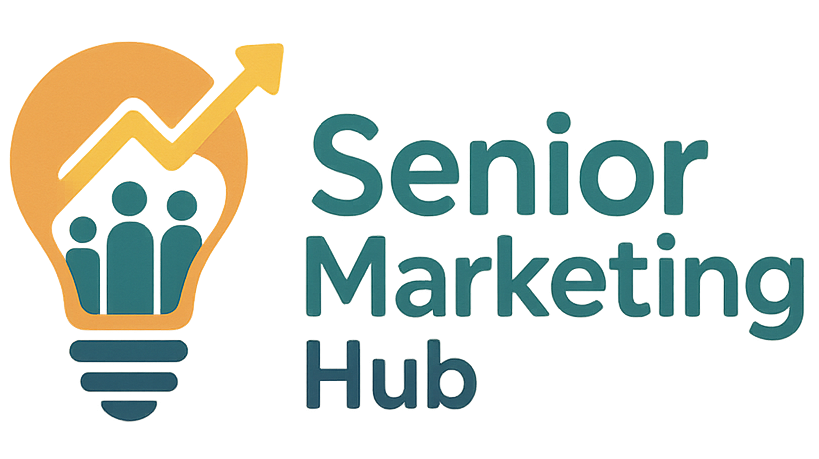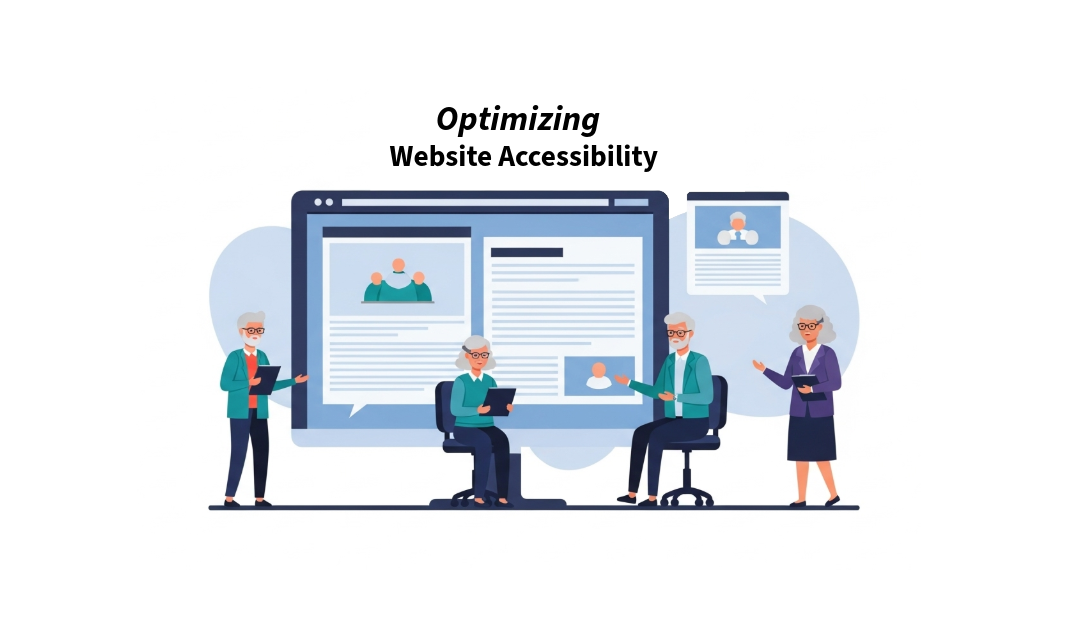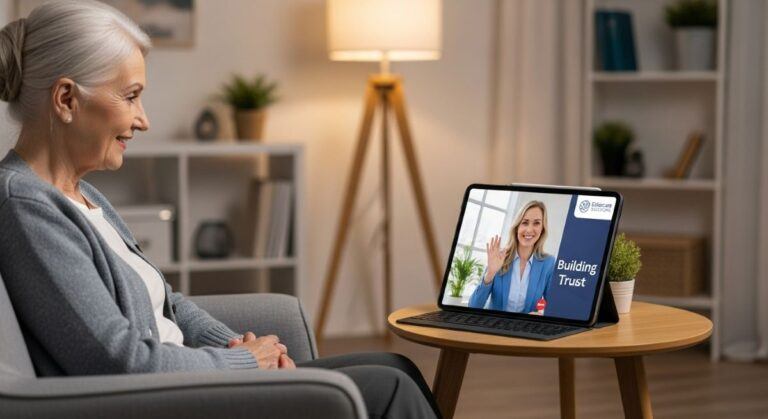Website accessibility matters for everyone, but it’s essential when designing for seniors/older adults. Whether you run a blog, an e-commerce site, or an affiliate marketing hub, making your content easy to use can really boost engagement and satisfaction among senior marketers. I’ve spent a lot of time working with folks in the 60+ crowd and have picked up quite a few tricks to help websites feel less intimidating and more enjoyable for our audience.
Here’s my guide to optimizing your website for us older adult users, along with how this ties into successful affiliate marketing, including options like Wealthy Affiliate.
TL;DR – Optimizing Website Accessibility for Seniors
Quick Summary
A senior-friendly website needs more than pretty design—it must be easy for older visitors to use and understand.
Accessibility is key to building trust, lowering frustration, and keeping older users engaged.
- Use larger fonts, high contrast colors and clear headings for readability.
- Ensure keyboard navigation, alt text for images and simple layouts for everyone’s benefit.
- Test your site on tablets, phones and desktops with older-eyes and slower connections in mind.
- Clear menus and descriptive links help seniors find what they need without confusion.
“A website that welcomes seniors is one they will stay on, trust and recommend.”Start Building Your Online Business Journey
Why Website Accessibility for Older Adults Makes a Difference
As I can attest, we seniors are among the fastest-growing groups of internet users, using the web for everything from shopping and education to keeping up with family. We can feel discouraged if a site is tricky to use, has tiny text, or uses confusing layouts. A little extra thought can go a long way for many visitors.

Common age-related challenges include vision changes (I’m with you on this), reduced dexterity, and sometimes hearing loss. By keeping these things in mind, you create a more welcoming experience for everyone, especially seniors. When you cater to these needs, more people stick around, return to your site, and share your content with friends or family.
Moving Toward Accessibility: Where to Begin
I like to start with the basics—things anyone can tweak pretty quickly. You don’t have to be a coding whiz. Here are some smart starting points:
- Readable Text: Use larger font sizes (at least 16px), easy-to-read fonts, and high contrast between text and background. Stick to short paragraphs and bulleted lists for easier scanning.
- Simple Navigation: Menus and buttons should be clearly labeled and large enough to tap, especially for users with shaky hands.
- Consistent Layout: Keep pages orderly. Having the same menu in the same spot, clean backgrounds, and predictable design helps people feel comfortable.
- Descriptive Links: Instead of “click here,” use link text like “Download the guide on accessible web design.” Clear instructions help everyone, but older adults especially appreciate them.
- Image Alt Text: Add descriptive alt text to images. This helps users with screen readers and is a solid SEO strategy as well.
Top Accessibility Features for Older Adult Audiences
I’ve noticed that some features consistently get the best results for my senior visitors. Here are ones worth focusing on first:
- Text Resizing Tools: Add a “resize text” option at the top of your site. It’s a minor fix that can make things much easier for people who need bigger type.
- Keyboard Accessibility: Make sure every link, button, or form field can be accessed with the keyboard alone. Not everyone uses a mouse; some folks rely on tabbing through options.
- Clear Calls-to-Action: Use big, colorful buttons with plenty of padding, and make sure important info isn’t buried at the bottom.
- Captioned Videos: If you use video, add captions and transcripts. Hearing loss is common in older adults, and captions are very helpful.
- Adjustable Contrast: Let users switch to a high contrast color mode. Many seniors say this feature makes a huge difference, especially for low vision or color-blind visitors.
Common Website Barriers (and How to Fix Them)
Older adults often struggle with the same frustrating barriers on websites. Here’s what to look out for, with real fixes that only take a bit of effort:
- Tiny Click Targets: Buttons or links smaller than 44×44 pixels are tough on shaky hands or less precise mouse skills. Make them bigger and add some space around each one.
- Auto-Playing Media: Videos or audio that play automatically can be disorienting. Turn off auto-play by default, letting users control media themselves.
- Complex Forms: Registration or contact forms with unnecessary fields just add stress. Only ask for what you need, mark each field clearly, and provide example text or hints for what to type.
- Wall of Text Pages: Sites with long, unbroken paragraphs and little whitespace scare everyone away. They’re especially tough for seniors. Break content into short, skimmable chunks and use plenty of space to make things feel less cluttered.
- Color Only Indicators: Don’t use color alone to communicate information, like marking errors in red. Combine color with icons or descriptive labels so nobody misses out.
Keyboard Shortcuts and Tab Order Matter
Some seniors use adaptive keyboards or prefer not to use a mouse. If your website’s navigation order jumps around, it can be really confusing. Tabbing should move naturally from one section to the next. Try testing your site using only the “Tab” and “Enter” keys—you might be surprised by what you spot.
Accessible Images and Media
Images should come with alt text that actually describes what’s happening, not just a file name. For videos, in addition to captions, consider audio descriptions (spoken summaries of visual content) to provide clarity for users who may not see everything on the screen. If you include charts or graphics, include a brief, plain-language summary right below the image that explains what it means.
How Accessibility Helps With Affiliate Marketing
Affiliate marketing thrives on a broad, engaged audience. Many older adults are shopping online more than ever, reading reviews and seeking recommendations before they buy. If your website is tough to use, you’ll see missed clicks and lower conversion rates.
When you improve accessibility, affiliate links, such as banners or product buttons, become easier to find and click. That’s good for your readers and your revenue. Partner programs like Wealthy Affiliate even include training on website building with accessibility in mind, making it easier to reach an older demographic without missing out on commissions. For more tips, check out Wealthy Affiliate’s website-building resources. They go pretty deep on accessible design and SEO best practices, so your site can stand out for everyone—young and old alike.
Practical Tips to Give a Boost to Accessibility Fast
- Use Website Builders with Accessibility Features: Platforms like WordPress offer a ton of accessible themes and plugins. Some plugins help resize fonts, adjust contrast, and check for WCAG (Web Content Accessibility Guidelines) compliance.
- Test With Real Users: If you know any older adults, ask them to visit your site and share their thoughts. Watching how someone interacts in real time will show issues you might miss on your own.
- Use Accessibility Checkers: Tools like Wave, Axe, or Lighthouse scan your website and flag problems. Many are free and easy to run with just a browser extension.
- Regularly Update and Maintain: Accessibility isn’t just a “one and done” fix. Every update or new content should be checked for ease of use, especially for seniors.
- Keep it Simple: When in doubt, stick with the simplest, most straightforward option. Complicated pages tend to be overwhelming for everyone, especially older visitors.
Affiliate Marketing, Accessibility, and Wealthy Affiliate
Wealthy Affiliate has a big library of training lessons on setting up your affiliate blog or business, with lots of advice suited to the needs of older adult visitors. It covers how to choose accessible WordPress themes, format posts with clear navigation, and add features like larger buttons and easy-to-read fonts. Building an accessible affiliate marketing website doesn’t just help you reach more people—it can mean more success too, since older adults are a very loyal audience when they find sites that work for them.
The Wealthy Affiliate community is excellent for troubleshooting website usability questions. If you ever get stuck, posting a question there often gets you quick advice from folks who’ve been in the same situation. WA members love to pay it forward to each other. The site itself is designed with accessibility in mind, so it’s a good place to learn by example as well as by doing.
Frequently Asked Questions
How do I know if my website is accessible for seniors?
Start by running an online accessibility checker on your site, then try using it in high-contrast mode or with a screen reader. Asking older friends or family for honest feedback can also be helpful.
What’s the easiest first step to make my site friendlier for older adults?
Increase your body text size and check that your site uses clear, simple navigation. This quick change removes a significant barrier for seniors.
Are there tools to help with accessible affiliate marketing?
Definitely! WordPress accessibility plugins are plentiful, and site builders promoted by Wealthy Affiliate come with built-in settings for contrast, resizing, and keyboard navigation.
Making Accessibility Part of Your Website Routine
Optimizing your site for older adults is about respect, clarity, and care—not technical wizardry. If you make your site usable and straightforward for seniors, you’ll help every visitor have a better experience. This approach also enables you to achieve your affiliate marketing goals, opening your site to one of the most loyal and appreciative online audiences. Wealthy Affiliate and similar programs have the tools and support you need to do it right and help your business thrive.
Building accessibility into your routine isn’t a chore once you start seeing the appreciation from your readers and the positive effects on engagement and sales. It’s a win-win situation that benefits everyone, yourself included.
What’s your take on this? Do you feel like your website is optimized? Do you need assistance in making your website accessible? Wealthy Affiliate will help you there! Drop a comment below—your insight might be precisely what someone else needs. I read every comment and reply when I can. Let’s learn from each other.




